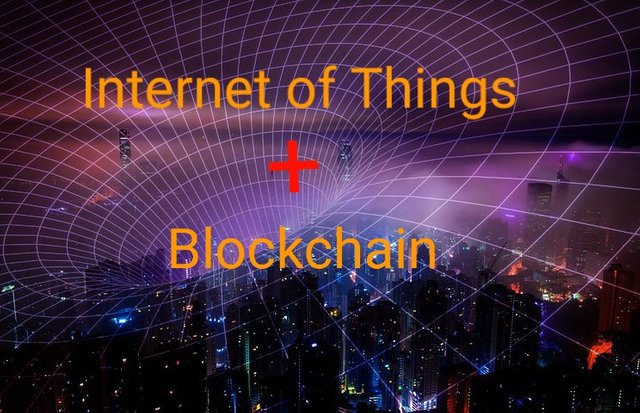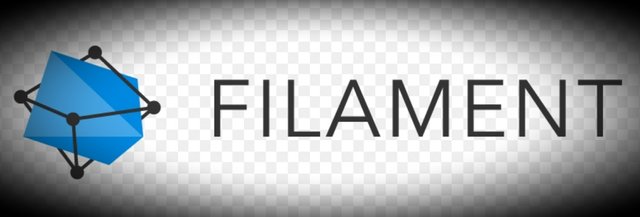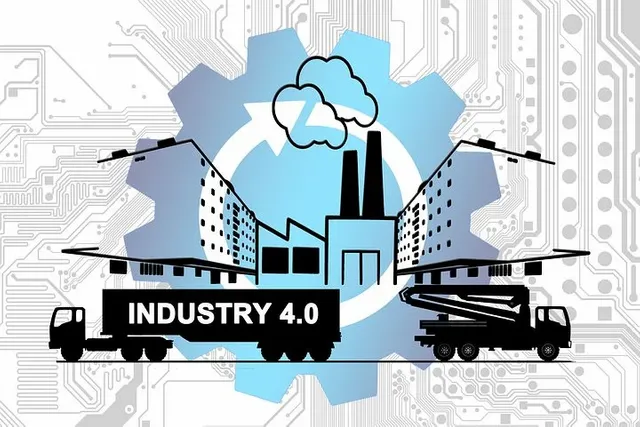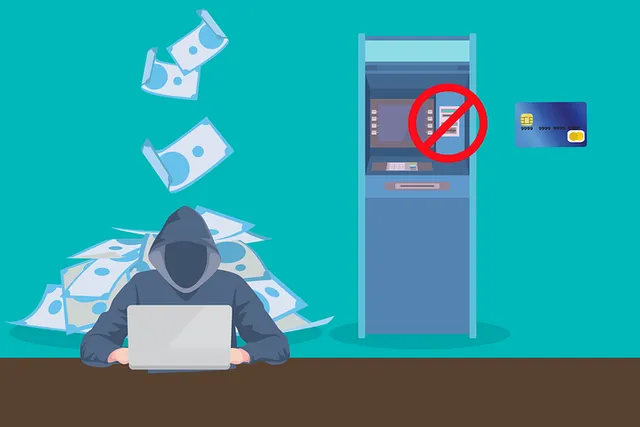Hello buddies and welcome to season 4 of the Crypto Academy. It is an honour going through the lectures of our dear professor @yohan2on. Here I will undertake the homework; BlockBlockchain Technology and Internet of Things (IoT).

Question 1. Explain why the future Internet of Things depends on Blockchain.
In this era of insane technological advancement, we have witnessed the emergence of new technologies and have also consolidated on the old ones. This is so much that technology now forms the basis on which many other things hinges on. This will bring me to two cutting-edge technologies that have seen mass proliferation in this present time: The Internet of Things (IoT) and the Blockchain technology. Here, we will look at both of them holistically and then look at their interoperability.
Overview of Internet of Things (IoT)
In its simplest term, IoT is an emerging technology that provides the system in which your computational devices, mechanical devices and other gadgets are connected to work together to form a single whole. The IoT framework has also made it possible for these devices to send and receive data without having to rely on human intervention. More so, this has also led to people living a smarter life.
For example, you can monitor your homes and even track conversations from the comfort of your mobile phone. Or you can connect the CCTV of your office to your mobile phone and get live feeds from there. The list goes on because the potentials are almost limitless. No wonder this popular quote by a renowned proponent of emerging technology says:
A time will come when humans themselves will become extensions of their own devices. - Ray Kurzweil.

However, with the limitless possibilities in IoT, there are inherent weaknesses in it. Let us take a look at these weakness and then see the feasible solution; which is the Blockchain.
Inherent weaknesses in IoT
Security Concerns: While devices are being interconnected together, the interface can be predisposed to security breech or hacking with the purpose of gaining unauthorized data and information as they are being transmitted in the IoT framework.
Information misuse and alteration of data: once a bug or malware gains access to any device connected to the IoT, it can rapidly spread through each of the devices and then alter the data that are generated or stored in the IoT.
Issues of Versatility: As the number of gadgets being connected in an IoT gets increased, difficulty may arise in the way data are managed. This may lead to the slowing down of the overall network as a result of excessively large data to work with.
Blockchain; the Solution
Having seen the inherent weaknesses in IoT, one may be quick to ask "what is the way forward?" Well, technology has also presented us with a potent solution in Blockchain. We will take a look at how Blockchain will solve the above mentioned weaknesses of IoT. But before then, let's see an overview of what Blockchain is.
Blockchain Overview
Blockchain, in a layman's term, is group of distributed ledger or transactions which are held together in a chain of blocks and are immune to alteration. In this way, the transaction that are made in Blockchain and the data that are saved there will remain immutable.
Now, with this in mind, to solve the problem of IoT, researches have been made to harness the power of Blockchain and incorporate it into the IoT to create the "Distributed Internet of Things" - which is the future of IoT.
Pathway to the future of IoT: Blockchain
Since we have seen the CONs of IoT, let's see the advantages of Blockchain that will complement it. This will also create the precedence as to why Blockchain will ultimately become the future of IoT.
Data Integrity and Immutability: Since devices will be connected together in an IoT, there is a need to maintain a high level of data integrity as the data are being transmitted from device to device - hence, Blockchain is needed
Security And Privacy: The Blockchain technology can create a framework where devices that are connected in IoT can run transaction conceptually with reliability and security. To do this, a smart contract will be created to establish certain agreements between the parties (gadgets, devices) involved in the transaction. Upon satisfying the conditions, the transaction will be securely executed.
Computational dexterity with minimal cost: The feature of Blockchain will make it possible for two or more devices to communicate using a peer-to-peer infrastructure with each other, without needing to pass through any central authority. With this, there will be an increased speed of transaction, while maintaining a low operational cost.
With these advantages, you will agree with me that the advantages of Blockchain is what will ultimately provide the solution to the downsides of IoT.
Question 2. Research and create content on the following IoT Blockchain use case
The merger of Blockchain and IoT will find practical applications in many industries and fields. Here, we will take a look at the use cases of the this emerging technology. But before then, let us take a look at a world renowned IoT and enterprise network designer - FILAMENT.

Filament - Use case of IoT
Filament is one of the leading developers of IoT and other enterprise networks that are based in Reno, which focuses on the merging of Blockchain with IoT in a single framework. More so, Filament's backbone is basically hinged on the industrial application of IoT - that is the IIoT (Industrial Internet of Things).
The major advantage of Filament is that it provides software, hardware, and protocols that allow devices to be connected in IoT and enable data sharing through a secure network by leveraging on Blockchain.
Now let us consider the various fields where this merger of Blockchain and IoT will find practical use case.
In Insurance field
Insurance basically deals with assessment and provision of indemnity against unforseen events. Now, one may wonder, how is IoT and Blockchain related to Insurance? In the assessments of risks, copies of indemnity and other legal informations are recorded and will definitely require a record or a ledger.
Instead of using the traditional way of record keeping or the other on-net record keeping application, a smart contract can be created in Blockchain for this record and it will be saved immutably. This smart contract can then be accessed by the parties involved but cannot be altered.
Furthermore, Insurance policies and other vital information can be gotten and communicated in real-time with the help of the IoT. With this, intelligent information (like smart CCTV footage, motion sensors, etc) can be transmitted in the event of an unfavorable occurrence, and the risk assessment can be done with speed and accuracy.
In the manufacturing industry
The world in already in the middle of a massive industrial revolution - the 4th in the series. This 4th industrial revolution (industry 4.0) has seen the combination of cutting-edge technologies like the Artificial Intelligence (AI), IoT, and with the addition of Blockchain, it will lead to an easier manufacturing process. Take the case of supply-chain in manufacturing, this can be facilitated with the help of Blockchain.

More so, Blockchain can be incorporated in the logistics process that is involved in manufacturing with the end-to-end or peer-to-peer infrastructure that is featured in the Blockchain. For example, an ecosystem can be designed to create a supply-chain between sellers, manufacturers, suppliers, etc, and all these will be executed with the help of smart contract.
In Safety and Security industry
Cyber terrorism has been an increasing concerns to security around the world. A particular scenario was the case of Alibaba in 2019, where a hacker was able to gain unauthorized access and altered the information of about 1 billion users that were saved on the platform, making is one of the biggest breaches in security of the century.
You can also see many big companies that have been massively hit by cyberpunks and have suffered from security breaches in this Report: the likes of MySpace, Yahoo, LinkedIn, Adobe, and many others. This is where Blockchain will provide the solution because the duplicate copies of each transaction will be distributed through various nodes and servers - which makes it almost impossible for cyberpunks to succeed in attacking it.

As the world is being interconnected to form a "global village," any attack in one party could easily spread to other parties, and that is why Blockchain has remained the best option to combating this. This means that, instead of having just the "Internet of Things," the Blockchain will provide an added layer of security to make it "Internet of Trusted Things" (IotT).
Conclusion
This era has been remarkable for advances in technology and this has been made evident in two of the top most emerging technologies: Internet of Things, and Blockchain. The IoT is a way of interconnecting your computational devices, mechanical devices, mobile devices, etc to form a single but complex whole that works together and share data.
However, the technology of IoT does not come without challenges and downsides. We have enumerated them and then preferred solutions which will hinge on Blockchain. With Blockchain, the issues of operability, security, privacy, speed, and computational dexterity, have been tackled.
Thanks all for reading, and special appreciation to @yohan2on
Thanks for reading


Hi @samminator
Thanks for participating in the Steemit Crypto Academy
Feedback
This is good content. Well done with your research study on Blockchain and IoT integration with one of its prominent use-case "Filament"
Total| 10/10
Downvoting a post can decrease pending rewards and make it less visible. Common reasons:
Submit
Thanks a lot buddy, I'm really honoured
Downvoting a post can decrease pending rewards and make it less visible. Common reasons:
Submit